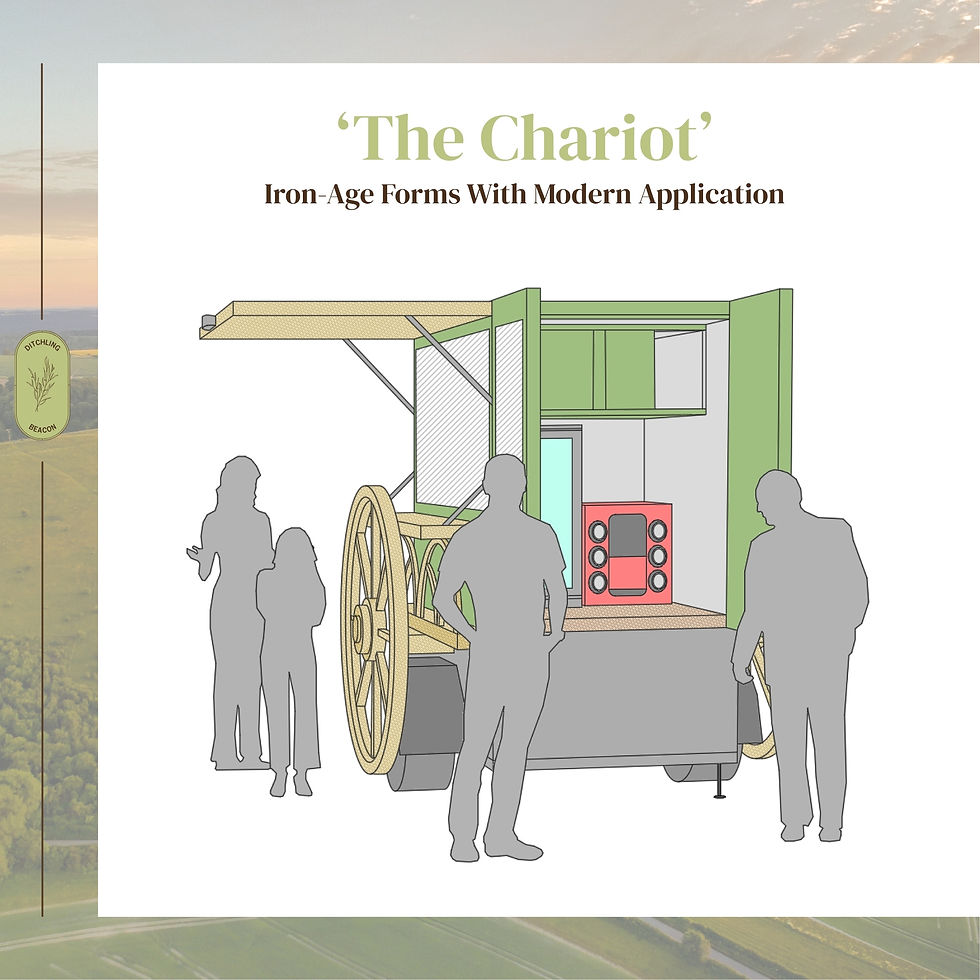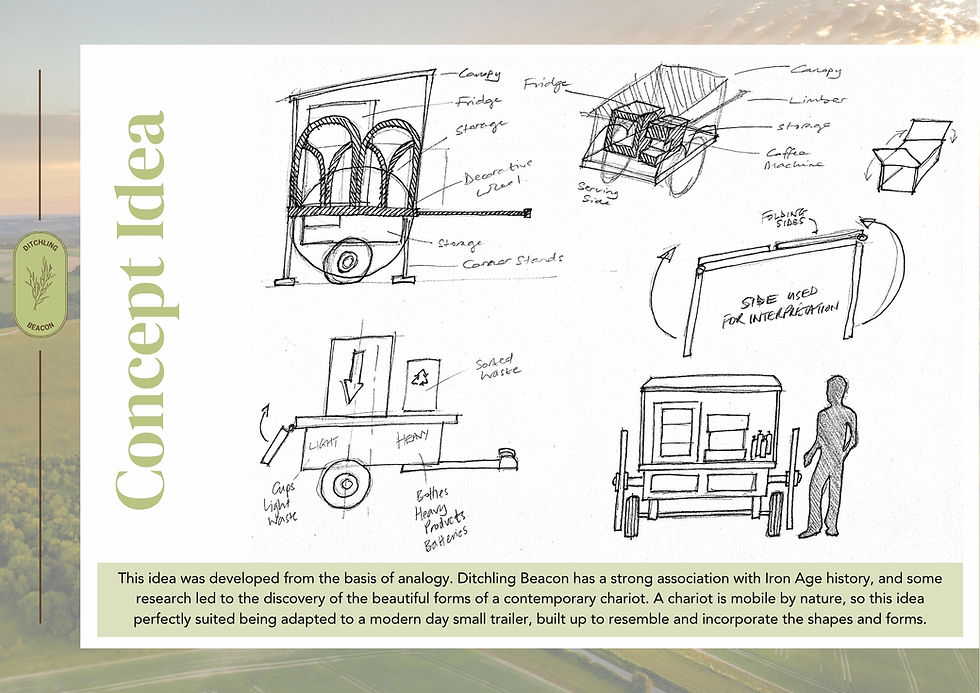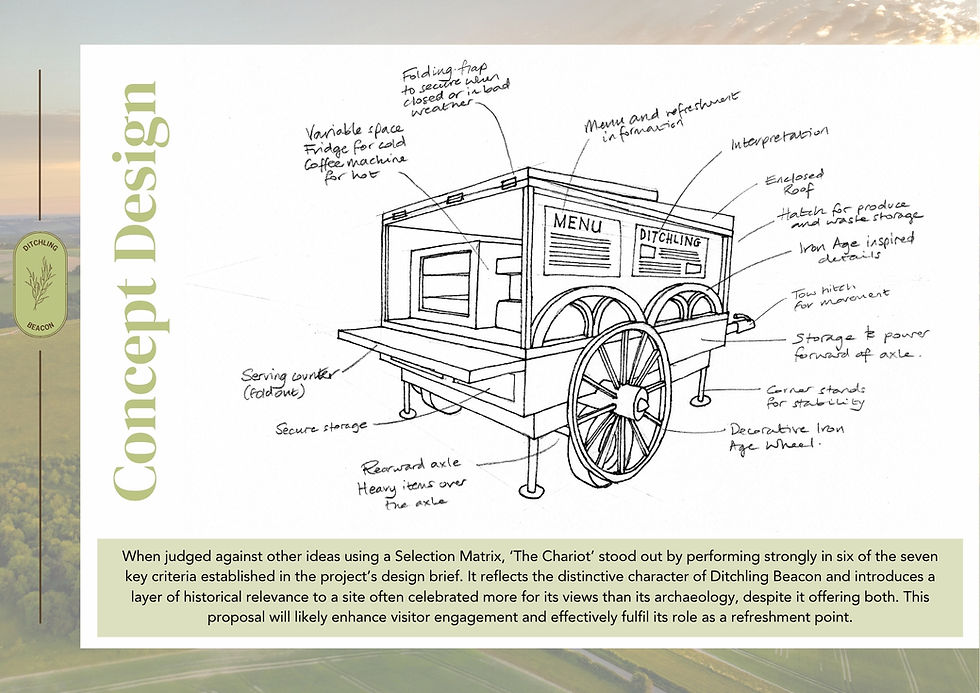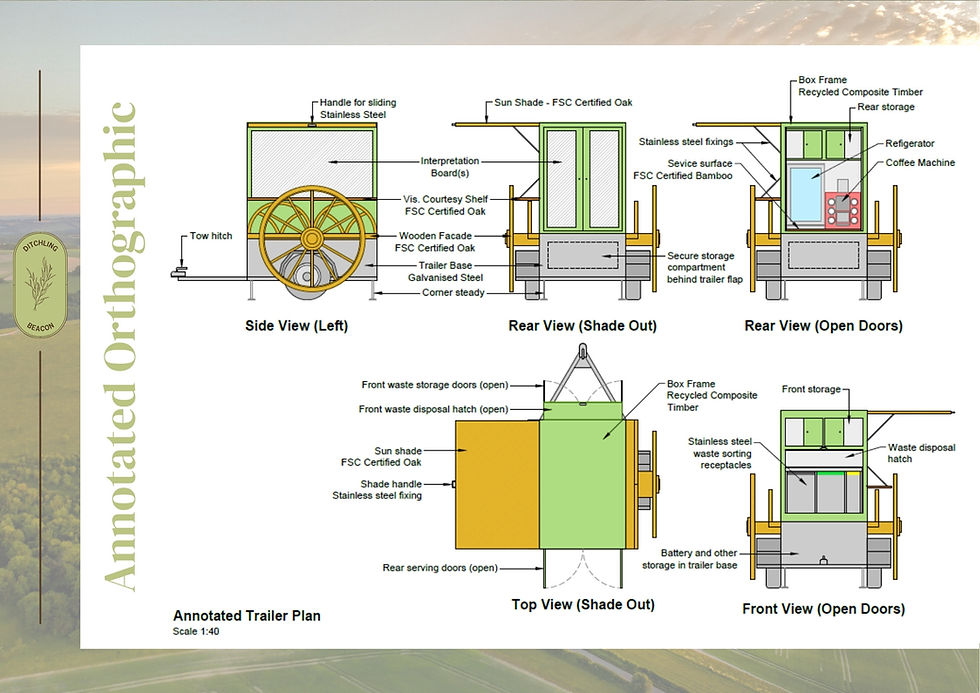
Design Problem
Ditchling Beacon National Park requires a practical, low-impact refreshment facility that enhances the visitor experience and generates revenue for conservation. It should be fit-for-purpose, easy to deploy, and should respect the site’s ecological and archaeological significance.
The project aimed to develop a ‘thoughtful’ and well-suited refreshment offer for Ditchling Beacon National Park.
‘The Chariot’ refreshment facility was designed as a site-sensitive, functional, and characterful response to a user research-led design brief providing refreshments for visitors, while respecting the landscape, archaeological context, visitor desires, and logistical needs of a seasonal, low-impact offer.
Description of the Project


I began by undertaking a modelled visitor survey and a user visit to a local National Trust site with a well-established outdoor refreshment offer, using these insights to create the Design Brief.
I researched Iron Age structures and artefacts to get a sense of their styles and forms and looked for inspiration which embodied the principles I was seeking to echo with my concepts.
Process

'The Chariot’ was one of five concept ideas and was inspired by the analogy of an Iron-Age chariot, incorporating the shapes and forms from the archaeology. The design excelled in the imperatives identified in the design brief, particularly in its practicality and characterful design.


I developed designs to enhance the trailer’s utility and usability, incorporating a modern ‘off-the-shelf’ trailer to use as a base, allowing easy maintenance. These known dimensions allowed me to visualise the design and refine the layout to make it more user-friendly for staff.
Finally, I explored appropriate materials and making processes to design a materials specification with the intent of matching the character of the site
About me
I am a mature student, having previously specialised in the conservation and management of heritage sites. I am working to complete my Diploma of Higher Education in Computing & IT and Design, to transition into a career in web and online media design. T217 has been incredibly engaging and useful in teaching the core principles of good design, and I look forward to applying them after graduation.

